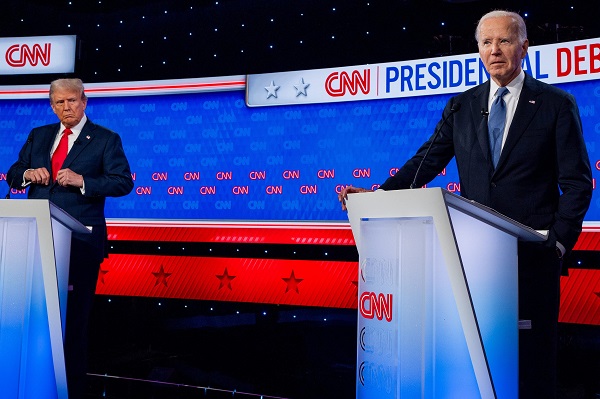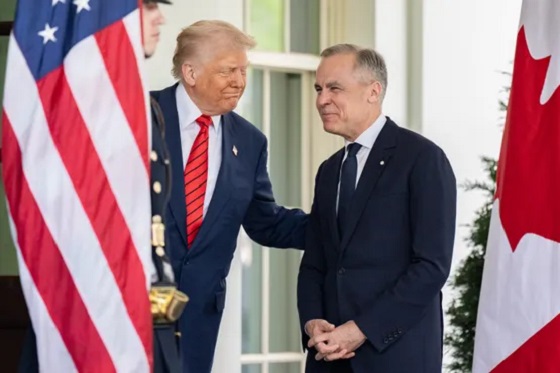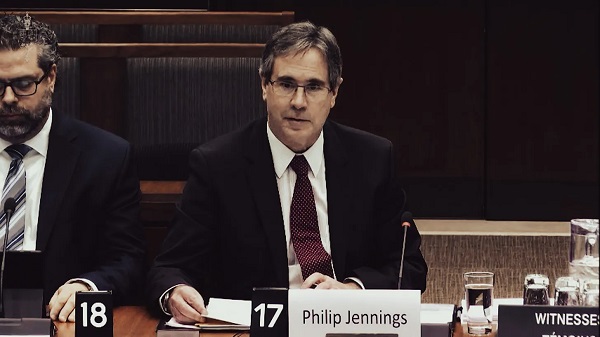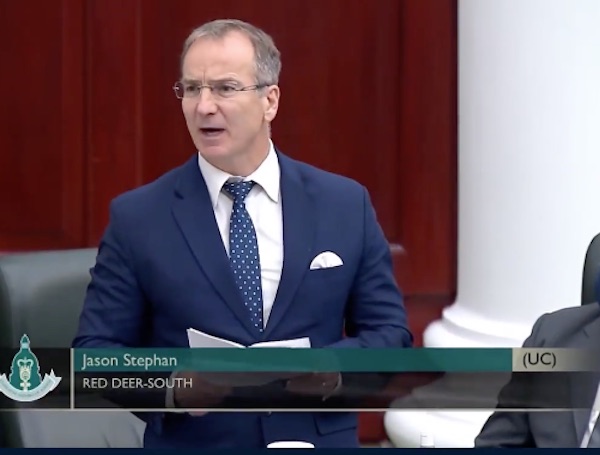International
WHO IS RUNNING THE COUNTRY?

News release from Seymour Hersh
Biden’s decline has been known to friends and insiders for months
Readers of this column know that President Joe Biden’s drift into blankness has been ongoing for months, as he and his foreign policy aides have been urging a ceasefire that will not happen in Gaza while continuing to supply the weapons that make a ceasefire less likely. There’s a similar paradox in Ukraine, where Biden has been financing a war that cannot be won and refusing to participate in negotiations that could end the slaughter.
The reality behind all of this, as I’ve been told for months, is that the president is simply no longer there, in terms of understanding the contradictions of the policies he and his foreign policy advisers have been carrying out. America should not have a president who does not know what he has signed off on. People in power have to be responsible for what they do, and last night showed America and the world that we have a president who clearly is not in that position today.
Seymour Hersh is a reader-supported publication. To receive new posts and support my work, consider becoming a free or paid subscriber.
The real disgrace is not only Biden’s, but those of the men and women around him who have kept him more and more under wraps. He is a captive, and as he rapidly diminished over the past six months. I have been hearing for months about the increasing isolation of the president, from his one-time pals in the Senate, who find that he is unable to return their calls. Another old family friend, whose help has been sought by Biden on key issues since his days as vice president, told me of a plaintive call from the president many months ago. Biden said the White House was in chaos and he needed his friend’s help. The friend said he begged off and then told me, with a laugh: “I would rather have a root canal procedure every day than go to work there.” A long retired Senate colleague was invited by Biden to join him on a foreign trip, and the two played cards and shared a drink or two on the Air Force One flight going out. The senator was barred by Biden’s staff from joining the return flight home.
I have been told the increasing isolation of the president on foreign policy issues has been in part the doing of Tom Donilon, whose younger brother, Michael, a key pollster and adviser in Biden’s 2020 presidential campaign and in the current re-election effort, was part of the team that spent much of the week briefing Biden for last night’s debate. Tom Donilon, who is 69, was President Biden’s national security adviser from 2010 to 2013 and sought unsuccessfully to be named as Biden’s director of the Central Intelligence Agency. He remains very much an insider.
Given Biden’s obvious decline in recent months, it is impossible for an outsider to understand why the White House agreed to any debates with Donald Trump before the election, let alone committing to the earliest presidential debate, the first of two, in modern history. One thought, I was told, was that if Biden performed well, as he had in his State of the Union speech in March, the issue of his mental capacity would be tabled. A poor performance would give the Biden campaign time to do a better prep job for the scheduled second debate.
There also was pressure from the major Democratic fundraisers, many of them in New York City, for the campaign to do something to counter the perception of the president’s obvious growing impairment, as reported and filmed by major media. I have been told that at least one foreign leader, after a closed meeting with Biden, told others that the president’s decline was so visible that it was hard to understand how, as it was put to me, “he could go through the rigors” of a re-election campaign. Such warnings were ignored.
What now? One of Washington political savants told me today that the Democratic Party is now facing “a national security crisis.” The nation is backing two devastating wars with a president who clearly is not up to it, he said, and it might be time to start drafting a resignation speech that would match or outdo the one given in March of 1968 by President Lyndon Johnson after his narrow victory over Senator Eugene McCarthy in the New Hampshire primary.
“They’re trapped,” he said of the senior advisers in the White House who hoped that Biden would somehow do well enough in last night’s debates to carry on, with the much-needed support of the more skeptical financial supporters in New York City.
Not everyone I talked to today agreed that it is time to force a Biden resignation and hope for the best at the Democratic National Convention in Chicago in August—to dump the ticket and seek new candidates. “My humble opinion,” one longtime contributor to the Democratic Party told me, “is to let the dust settle. Must examine the realistic options before some quick reaction creates an internal Democratic Party split with far-reaching consequences beyond 2024. Accept reality . . . 2024 is likely beyond recovery at this point. Too steep a hill to climb. Plan and execute a long-term plan to counter Mr. Orange and build a moderate platform for the recovery . . . and let Biden wander off to the Jersey Pine Barrens.”
A differing view was expressed by another political guru. “This is the age of social media—TikTok, Facebook, Instagram, and X—and a political campaign can go very far very fast.”
Whatever happens, we have a president—now fully unveiled—who just may not be responsible for what he does in the coming campaign, not to mention his actions in the Middle East and Ukraine.
Whatever happened to the 25th Amendment that authorizes the vice president and a majority of the Cabinet to declare the president incompetent? What is going on in the Biden White House?
Seymour Hersh is a reader-supported publication. To receive new posts and support my work, consider becoming a free or paid subscriber.
Censorship Industrial Complex
A Democracy That Can’t Take A Joke Won’t Tolerate Dissent

From the Frontier Centre for Public Policy
By Collin May
Targeting comedians is a sign of political insecurity
A democracy that fears its comedians is a democracy in trouble. That truth landed hard when Graham Linehan, the Irish writer behind Father Ted and The IT Crowd, stepped off a plane at Heathrow on Sept. 1, 2025, and was met by five London Metropolitan Police officers ready to arrest him for three posts on X.
Returning to the UK from Arizona, he was taken into custody on the charge of “suspicion of inciting violence”, an allegation levelled with increasing ease in an age wary of offence. His actual “crime” amounted to three posts, the most contentious being a joke about trans-identified men in exclusively female spaces and a suggestion that violated women respond with a swift blow to a very sensitive part of the male’s not-yet-physically-transitioned anatomy.
The reaction to Linehan’s arrest, from J.K. Rowling to a wide array of commentators, was unqualified condemnation. Many wondered whether free speech had become a museum piece in the UK. Asked about the incident, British Prime Minister Keir Starmer defended his country’s reputation for free expression but declined to address the arrest itself.
Canada has faced its own pressures on comedic expression. In 2022, comedian Mike Ward saw a 12-year legal saga end when the Supreme Court of Canada ruled five-to-four that the Quebec Human Rights Commission had no jurisdiction to hear a complaint about comments Ward made regarding a disabled Quebec boy. The ruling confirmed that human rights bodies cannot police artistic expression when no discrimination in services or employment has occurred. In that case, comic licence survived narrowly.
These cases reveal a broader trend. Governments and institutions increasingly frame comedy as a risk rather than a social pressure valve. In an environment fixated on avoiding perceived harm, humour becomes an easy and symbolic target. Linehan’s arrest underscores the fragility of free speech, especially in comedic form, in countries that claim to value democratic openness.
Comedy has long occupied an unusual place in public life. One of its earliest literary appearances is in Homer’s Iliad. A common soldier, Thersites, is ugly, sharp-tongued and irreverent. He speaks with a freedom others will not risk, mocking Agamemnon and voicing the frustrations of rank-and-file soldiers. He represents the instinct to puncture pretension. In this sense, comedy and philosophy share a willingness to speak uncomfortable truths that power prefers to avoid.
Aristotle, in his Poetics, noted that tragedy imitates noble actions and depicts people who are to be taken seriously. Comedy, by contrast, imitates those who appear inferior. Yet this lowly status is precisely what gives comedy its political usefulness. It allows performers to say what respectable voices cannot, revealing hypocrisies that formal discourse leaves untouched.
In the Iliad, Thersites does not escape punishment. Odysseus, striving to restore order, strikes him with Agamemnon’s staff, and the soldiers laugh as Thersites is silenced. The scene captures a familiar dynamic. Comedy can expose authority’s flaws, but authority often responds by asserting its dominance. The details shift across history, but the pattern endures.
Modern democracies are showing similar impatience. Comedy provides a way to question conventions without inviting formal conflict. When governments treat jokes as misconduct, they are not protecting the public from harm. They are signalling discomfort with scrutiny. Confident systems do not fear irreverence; insecure ones do.
The growing targeting of comedians matters because it reflects a shift toward institutions that view dissent, even in comedic form, as a liability. Such an approach narrows the space for open dialogue and misunderstands comedy’s role in democratic life. A society confident in itself tolerates mockery because it trusts its citizens to distinguish humour from harm.
In October, the British Crown Prosecution Service announced it would not pursue charges against Linehan. The London Metropolitan Police Service also said it would stop recording “non-crime hate incidents”, a controversial category used to document allegations of hateful behaviour even when no law has been broken. These reversals are welcome, but they do not erase the deeper unease that allowed the arrest to happen.
Comedy survives, but its environment is shifting. In an era where leaders are quick to adopt moral language while avoiding meaningful accountability, humour becomes more necessary, not less. It remains one of the few public tools capable of exposing the distance between political rhetoric and reality.
The danger is that in places where Agamemnon’s folly, leadership driven by pride and insecurity, takes root, those who speak uncomfortable truths may find themselves facing not symbolic correction but formal sanctions. A democracy that begins by targeting its jesters rarely stops there.
Collin May is a Senior Fellow with the Frontier Centre for Public Policy, a lawyer, and Adjunct Lecturer in Community Health Sciences at the University of Calgary, with degrees in law (Dalhousie University), a Masters in Theological Studies (Harvard) and a Diplome d’etudes approfondies (Ecole des hautes etudes, Paris).
Daily Caller
Tech Mogul Gives $6 Billion To 25 Million Kids To Boost Trump Investment Accounts


From the Daily Caller News Foundation
Billionaire Michael Dell and his wife, Susan, announced Monday that they will give 25 million American children a $250 deposit as an initial boost to President Donald Trump’s new investment program for children.
The Dells’ pledge totals $6.25 billion and will be routed through the Treasury Department. The goal, they say, is to extend access to the federal Invest America program — referred to as “Trump accounts” — established by the One Big Beautiful Bill Act, signed into law by the president in July.
The federal program guarantees a $1,000 federally funded account for every child born from 2025 through 2028, but the Dells’ money will instead cover children 10 years old and younger in ZIP codes where the median household income is under $150,000, according to Bloomberg.
Dear Readers:
As a nonprofit, we are dependent on the generosity of our readers.
Please consider making a small donation of any amount here.
Thank you!
“What inspired us most was the chance to expand this opportunity to even more children,” the Dells wrote in the press release. “We believe this effort will expand opportunity, strengthen communities, and help more children take ownership of their future.” (RELATED: Trump Media Company To Create Investment Funds With Only ‘America First’ Companies)
Dell, founder and CEO of Dell Technologies with a net worth of about $148 billion, has been one of the most visible corporate leaders championing the Trump accounts. In June, he joined Goldman Sachs CEO David Solomon, Uber CEO Dara Khosrowshahi, and others at a White House roundtable promoting the initiative.
In addition to the new $6.25 billion pledge, Dell Technologies committed to matching the government’s $1,000 contribution for the children of its employees. Other companies, such as Charter Communications, Uber, and Goldman Sachs, have said they are willing to match the government’s contributions when the accounts launch.
“This is not just about what one couple or one foundation or one company can do,” the couple wrote. “It is about what becomes possible when families, employers, philanthropists, and communities all join together to create something transformative.”
Starting July 4, 2026, parents will be able to open one of the accounts and contribute up to $5,000 a year. Employers can put in $2,500 annually without it counting as taxable income.
The money must be invested in low-cost, diversified index funds, and withdrawals are restricted until the child turns 18, when the funds can be used for college, a home down payment, or starting a business. Investment gains inside the account grow tax-free, and taxes are owed only when the money is eventually withdrawn.
The accounts will “afford a generation of children the chance to experience the miracle of compounded growth and set them on a course for prosperity from the very beginning,” according to the Trump administration.
The broader effort was originally spearheaded in 2023 by venture capitalist Brad Gerstner, who launched the nonprofit behind the Invest America concept.
“Starting 2026 & forevermore, every child will directly share in the upside of America! Huge gratitude to Michael & Susan for showing us all what is possible when we come together!” Gerstner wrote on X.
-

 Business1 day ago
Business1 day agoRecent price declines don’t solve Toronto’s housing affordability crisis
-

 Daily Caller1 day ago
Daily Caller1 day agoTech Mogul Gives $6 Billion To 25 Million Kids To Boost Trump Investment Accounts
-

 Alberta24 hours ago
Alberta24 hours agoAlberta will defend law-abiding gun owners who defend themselves
-

 Business1 day ago
Business1 day agoOttawa’s gun ‘buyback’ program will cost billions—and for no good reason
-

 Business1 day ago
Business1 day agoCanada’s future prosperity runs through the northwest coast
-

 Artificial Intelligence2 days ago
Artificial Intelligence2 days agoThe Emptiness Inside: Why Large Language Models Can’t Think – and Never Will
-

 National1 day ago
National1 day agoCanada Needs an Alternative to Carney’s One Man Show
-

 Censorship Industrial Complex23 hours ago
Censorship Industrial Complex23 hours agoA Democracy That Can’t Take A Joke Won’t Tolerate Dissent






